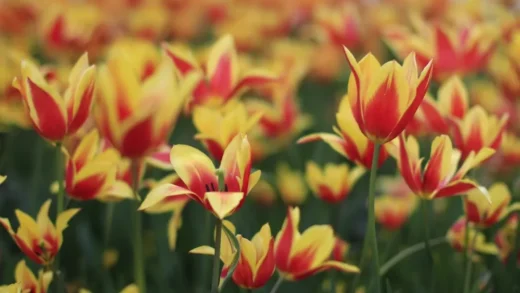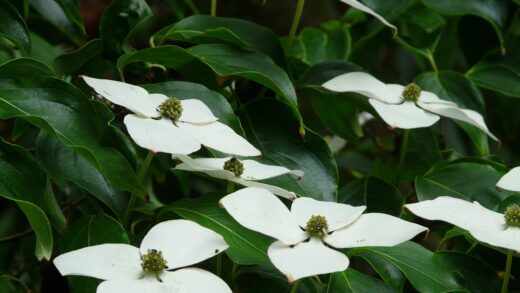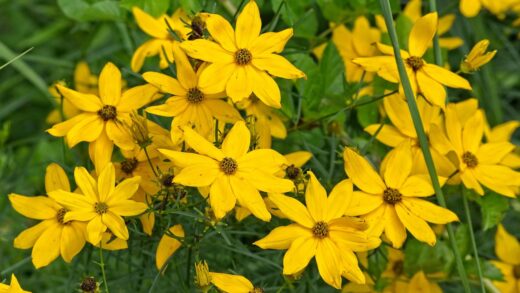Pruning is one of the most important horticultural practices for maintaining the health, vigor, and aesthetic appeal of a laurustinus. While this versatile shrub will grow perfectly well without any intervention, a thoughtful approach to pruning can transform it from a merely functional plant into a stunning garden feature. The art of pruning involves knowing not only how to make the cuts, but more importantly, when to make them and what your specific goals are. Whether you are aiming to control its size, improve its shape, encourage more flowers, or rejuvenate an old, tired plant, proper pruning is the key to success.
The primary reasons for pruning a laurustinus can be categorized into a few key objectives. The most common goal is size and shape management, keeping the shrub in proportion with its surroundings and maintaining a desired form, whether that is a neat hedge or a natural-looking mound. Another crucial objective is to improve the plant’s health by removing any dead, damaged, or diseased wood, which prevents the entry of pathogens and improves the overall structure. Lastly, pruning can be used to stimulate new growth and, when timed correctly, enhance the production of flowers.
Before making a single cut, it is essential to have the right tools for the job. A sharp, clean pair of bypass secateurs is perfect for cutting smaller stems up to the thickness of your finger. For larger branches, a pair of loppers will provide the necessary leverage, and for the thickest, oldest stems, a pruning saw will be required. It is vital that your tools are sharp to make clean cuts that heal quickly, and they should be cleaned with a disinfectant between plants to prevent the spread of disease.
It is also important to understand where to make the cut on a branch. Whenever possible, prune back to just above an outward-facing bud or a side branch. This encourages the new growth to grow outwards, helping to maintain an open and uncluttered structure in the center of the shrub. Avoid leaving long, bare stubs, as these will die back and can become entry points for rot and disease. A clean cut close to a growth point will heal over quickly and efficiently.
The critical timing of pruning
The single most important factor to understand when pruning a laurustinus is the timing. This shrub has a distinct flowering cycle, and pruning at the wrong time of year is the number one reason why a healthy plant may fail to produce its characteristic winter flowers. Getting the timing right ensures that you can shape and maintain the plant without sacrificing the following season’s floral display. This simple piece of knowledge is the difference between a successful pruning job and a disappointing one.
More articles on this topic
The golden rule for pruning laurustinus is to do it immediately after the main flowering period has concluded, which is typically in the late spring. The reason for this specific timing is that the plant produces its flowers on the growth that it made in the previous season. The flower buds for the next winter’s display are formed on the new shoots that grow during the summer and autumn. By pruning in late spring, you give the plant the entire growing season to produce these new shoots and set its flower buds.
If you prune a laurustinus in the summer, autumn, or winter, you will be cutting off the very stems that are carrying the developing flower buds. This will result in a severe reduction, or even a complete absence, of flowers for that winter. While this will not harm the long-term health of the plant, it will certainly be a disappointment. Therefore, it is crucial to resist the temptation to tidy up the shrub at any other time of year, apart from removing the occasional broken or obviously dead branch.
For a light, annual maintenance prune, this late spring window is the perfect opportunity to trim the shrub back to maintain its size and shape. You can shear the plant if you are maintaining a formal hedge, or selectively cut back individual branches to create a more naturalistic form. This post-flowering trim tidies up the plant after its long blooming season and sets it up perfectly for a healthy flush of new growth and a subsequent abundance of flowers the following winter.
Techniques for maintenance pruning
Annual maintenance pruning is a light and selective process designed to keep your laurustinus healthy, well-shaped, and productive without altering its fundamental size or character too drastically. This type of pruning is best carried out every year in the late spring, after the flowers have faded. It is a gentle approach that focuses on the three ‘D’s—removing anything that is dead, damaged, or diseased—as well as thinning out the growth to improve the plant’s overall structure.
More articles on this topic
Begin your maintenance prune by conducting a thorough inspection of the entire shrub. Your first priority is to remove any wood that is clearly dead, which will be dry, brittle, and will not have any green tissue under the bark. Cut these branches back either to their point of origin on a larger, healthy stem or all the way back to the base of the plant if the entire stem is dead. Next, look for any branches that have been damaged by wind, snow, or physical impact, and prune these back to a healthy side shoot or bud.
After addressing the dead and damaged wood, the next step is to improve the structure and air circulation within the plant. Look for any branches that are crossing over each other and rubbing, as this can create wounds in the bark that allow diseases to enter. In each case, decide which is the stronger or better-placed branch and remove the other one. Also, look for any weak or spindly stems in the center of the shrub and thin a few of them out to open up the structure and allow more light and air to penetrate the interior of the plant.
Finally, you can perform some light shaping to maintain the desired size and form of the shrub. Step back from the plant frequently as you work to assess its overall balance and symmetry. Trim back any overly long or errant shoots that are spoiling the shape of the plant, always cutting back to a leaf node or a side branch. The goal of this type of pruning is to be subtle; when you have finished, it should not look like the plant has been heavily pruned, but rather that it is just naturally neat and well-formed.
Rejuvenation or hard pruning
Over time, an old laurustinus that has been neglected or left unpruned can become very large, woody, and overgrown. It may develop a leggy appearance, with a congested center of old, unproductive stems and all the fresh growth and flowers concentrated at the very top. In these cases, a more drastic approach, known as rejuvenation or hard pruning, can be used to restore the shrub’s vigor and encourage it to produce a new framework of healthy, productive stems from the base.
There are two main approaches to rejuvenating an overgrown laurustinus. The first, and often the best method, is a gradual renewal over a period of three years. This involves cutting back approximately one-third of the oldest, thickest, and most unproductive stems right down to about six inches from the ground. This should be done in late spring, after flowering. The following year, you remove another third of the old stems, and in the third year, you remove the last of the old stems. This method has the advantage of retaining a good portion of the plant’s size and flowering capacity while it is being renewed.
The second, more drastic approach is to cut the entire shrub back hard, down to about a foot from the ground, all in one go. This is a high-risk, high-reward strategy that should only be undertaken on a healthy, vigorous plant. The best time to do this is also in the late spring. This severe pruning will shock the plant into producing a flush of vigorous new shoots from its base. While you will lose the flowers for a year or two, the result will be a completely renewed and much more compact and manageable shrub.
After performing a hard prune, it is essential to provide the plant with good aftercare to support its recovery and the growth of new shoots. Keep the soil around the base of the plant consistently moist throughout the growing season and apply a balanced, slow-release fertilizer to provide the necessary nutrients for the new growth. As the new shoots emerge, you may need to selectively thin them out to choose the strongest and best-placed stems that will form the new framework of the shrub.
Pruning for specific shapes
The versatile nature of laurustinus allows it to be pruned and trained into a variety of specific shapes, making it a valuable plant for formal garden designs as well as informal landscapes. Two of the most common applications are creating a dense hedge or screen and training the shrub into a small tree-like form known as a standard. Both of these require a more disciplined and regular pruning regime than a free-standing shrub.
To create a formal hedge, plant the young shrubs at the appropriate spacing and allow them to grow for a season or two to establish. Then, begin shearing them lightly in late spring after flowering to encourage dense, bushy growth. The key to a good hedge is to always keep the base slightly wider than the top, creating a tapered A-shape. This ensures that sunlight can reach the lower branches, preventing them from becoming bare and leggy over time. This annual shearing will need to be done every year to maintain the hedge’s crisp, formal lines.
For an informal screen, the pruning approach is much more relaxed. The goal is simply to encourage the plants to grow together and form a continuous wall of foliage. This can be achieved by selectively pruning back any branches that are growing out into pathways and by lightly thinning the plants every few years to keep them dense and healthy. The aim is not a perfectly manicured shape, but a soft, natural-looking screen that provides privacy and a green backdrop.
Training a laurustinus into a standard or small tree form is a more involved process that is best started with a young plant. Select a single, strong, upright stem to be the main trunk and remove all other competing stems from the base. As the main stem grows upwards, gradually remove the lower side branches to create a clear trunk, until the “head” of the tree is at the desired height. Once the head begins to form, you can prune it annually in late spring to create a dense, rounded canopy, creating a “lollipop” shape that is perfect for formal pots or as a focal point in a border.


















